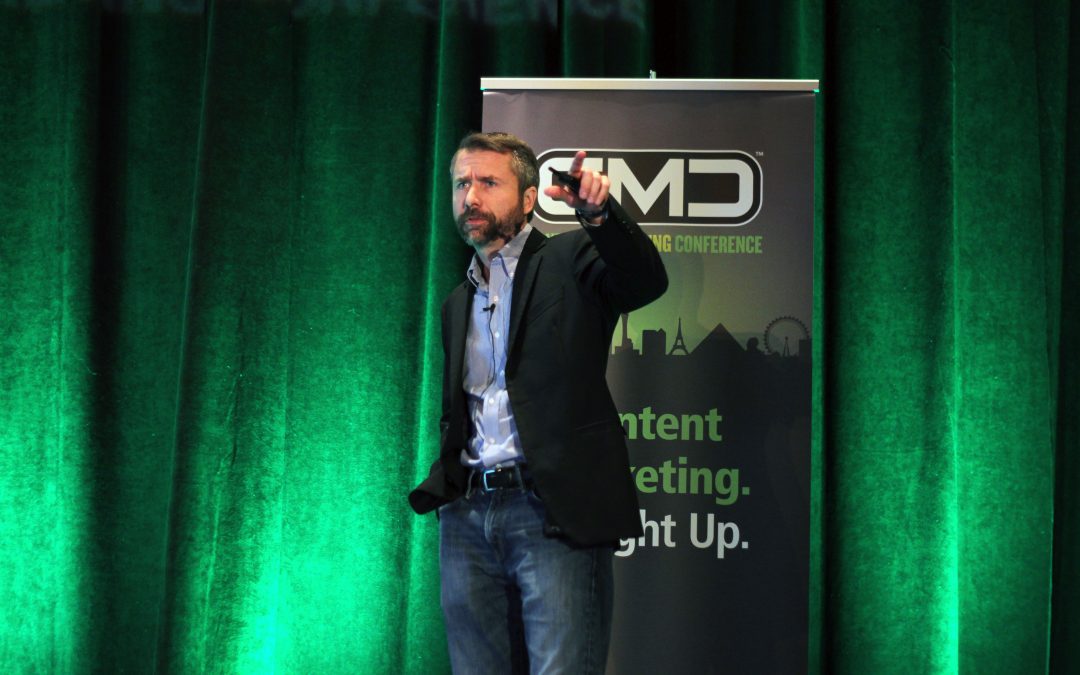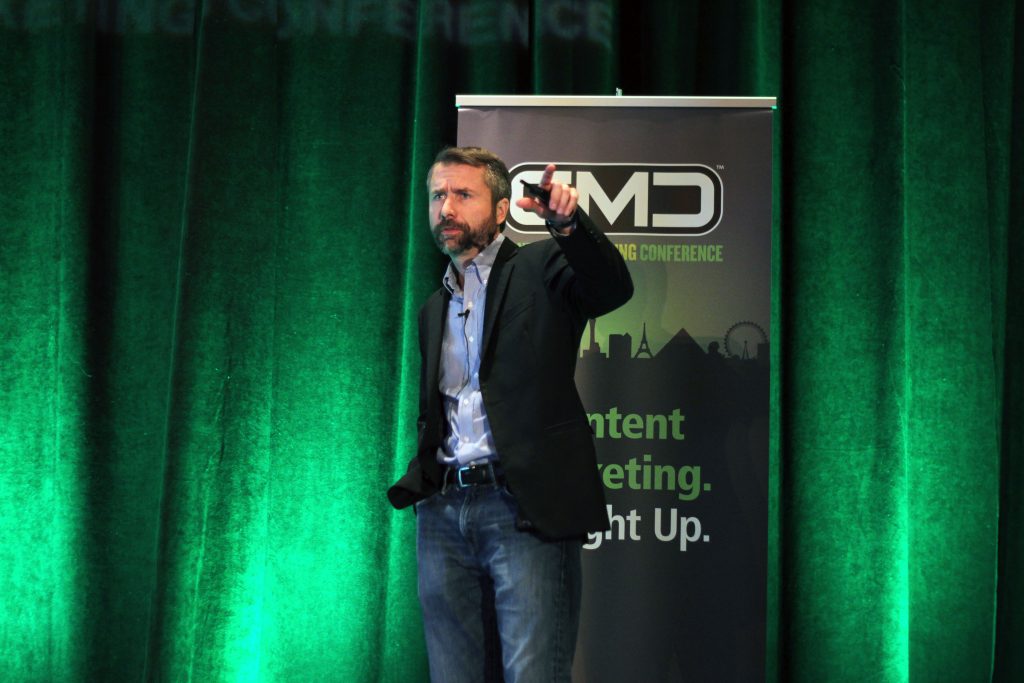“Are the things that are happening today going to shift the future tomorrow?” Jon Wuebben asked his audience at the 2016 Content Marketing Conference. His Content Planning presentation, titled “What’s Next: Tactics for the Peer-to-Peer Economy,” reflects his deep interest in anticipating the future effects of current trends. Wuebben is the CEO of all-in-one content marketing management company Content Launch. He shares the trends that will impact future technology and content marketing efforts, as well as how you can get a piece of the action in the growing peer-to-peer economy.
Wuebben identifies a number of trends that he can see ruling the future of the peer-to-peer economy.
- Mobile: the center of all marketing- Wuebben notes that mobile will become the standard for communication via email and social media. Instead of planning for website content and retrofitting it for a mobile platform, you need to put mobile capability first in your marketing plans.
- Transparency- Your ability to keep your company transparent will improve your customer relationships and earn you better brand loyalty. Show how you do your processes sustainably and responsibly, and Wuebben believes you will be rewarded for it.
- The need for good content- Despite the increase in available content all over the web, people still need good information in all forms. Visual content, especially videos, will become the vanguard of effective content marketing. Speed is absolutely critical, underscoring your need to maintain organizational efficiency in ideation, creation and publishing
- User-generated content- You have a number of passionate customers. Allow them to create your marketing content for you. They build a sense of loyalty to you for other readers.
- Social media- This is the next Internet, according to Wuebben. In order to take advantage of it, you must devise marketing campaigns and user events that treat social media as the comprehensive marketing system it has become.
- Branding- Wuebben argues that the wall between you and your customers will continue to fall. If you play your cards right, they will see you and your brand as indistinguishable. As a result, you will effectively own their purchasing decisions in your industry.
- Personalized, data-driven marketing- With your ability to build relationships with your customers comes an increased need to refine your personalized marketing strategies. You should take the data and use it to drive toward information and engagement that your individual customers crave.
- Metrics- At present, metrics are not always useful for you. In time, Wuebben claims that two-thirds of metrics will be meaningful, with a more-effective plan of action that you can take. You will be able to gauge your marketing campaigns’ success without relying on likes or shares.
Implications of Mega Trends
Wuebben argues that there are a number of mega trends that could significantly impact innovation for the peer-to-peer economy. He says that these mega trends include:
- urbanization
- health and wellness
- social trends
- connectivity and convergence
- the future of energy
and more. He observes that these mega trends are changing the way you and your customers lead daily lives. For example, he notes that there has been an explosion in technology relying on the sensorization of things, including face scanners, Siri and holographic touchscreens. The current social trends move toward gamification–the use of game mechanics outside of an actual game. It creates an element of competition that engages consumers and builds brand advocates. He believes that connectivity is pushing a convergence of numerous technologies, like space-based solar power, autonomous cars and smart-home hubs. That convergence is creating unlikely players in a contest for new markets to streamline the way that you consume content. In the future, this convergence will merge content production, and the technological capability to access it.
Trends for the Peer-to-Peer/Sharing Economy
Wuebben cites a statistic showing that the sharing economy is poised to grow from $15 billion in 2015 to $335 billion in 2025. You do not need to have a peer-to-peer-based business like Uber to get in on this trend. He claims that the future has peers telling marketers what to do. He gave the example of a particular Carrotmob campaign, which traded $3,000 in purchases at a cheese shop when the shop added bike parking and water-saving technology to its store. He noted another example of a hardware store that started a repair café where locals could bring in broken items of sentimental value, to have other locals repair them. It fostered a sense of community that also created a number of loyal customers who attended the event.
Tactics and Strategy
Since the sharing economy is somewhat of a nebulous concept, Wuebben believes that you need a firm strategy to get into it and establish yourself as an engaging, transparent organization. Start with user reviews, to improve your business’s credibility. Open a few live events so that your customers can interact with one another under your banner. Remember to always see your customers as partners, not one-off buyers you may never see again. Rely on multiple channels and modalities to streamline your service. Create custom content that helps anyone in your target demographic. Finally, ask your customers to give you feedback on your content marketing, and learn what you could be doing differently.
Conceiving of your customers as people with whom you could develop a lasting relationship is key to taking your share of the peer-to-peer economy, according to Jon Wuebben. With this assumption, you can build content that engages them, gets them actively working for your brand and increases your sustainability in a changing business world.


